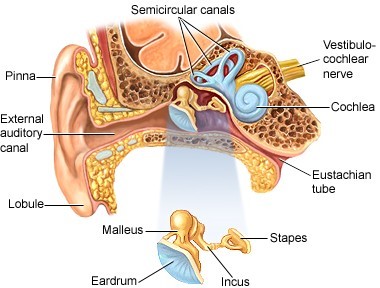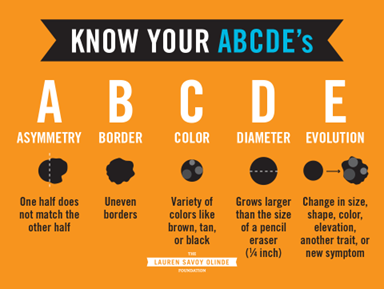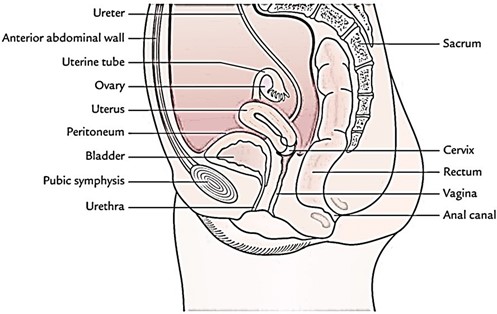Which anatomical structure houses the malleus, incus and stapes?
Skull
Lungs
Ear
Mouth
The Correct Answer is C
The malleus, incus, and stapes are three small bones, collectively known as the ossicles, located in the middle ear. These bones work together to transmit sound waves from the eardrum to the inner ear, where they are converted into nerve impulses that are then sent to the brain. The malleus is atached to the eardrum, the incus is in between the malleus and the stapes, and the stapes is connected to the inner ear. Together, they form a chain that amplifies the sound waves and transmits them efficiently to the inner ear.

Nursing Test Bank
Naxlex Comprehensive Predictor Exams
Related Questions
Correct Answer is C
Explanation
The ABCD rule is a mnemonic used to identify the characteristics of melanoma, which is a type of skin cancer. The leters stand for:
A -Asymmetry: One half of the mole or lesion does not match the other half.
B - Border irregularity: The edges are ragged, notched, or blurred.
C - Color: The color is not uniform and may include different shades of brown or black, or sometimes patches of pink, red, white, or blue.
D - Diameter: The size of the mole or lesion is greater than 6 mm (about the size of a pencil eraser), although melanomas can sometimes be smaller.
This rule is not as useful in detecting other types of skin cancer, such as squamous cell carcinoma, basal cell carcinoma, or sarcoma, as they tend to have different characteristics. However, any new or changing mole or lesion on the skin should be examined by a dermatologist to determine if it is cancerous.

Correct Answer is C
Explanation
The urinary bladder and internal reproductive organs, including the uterus, ovaries, and testes, are in the pelvic cavity. The pelvic cavity is a bony structure formed by the pelvis and contains the terminal portions of the digestive tract, urinary tract, and reproductive tract. It is situated inferior to the abdominal cavity and is separated from it by the pelvic brim, which is a rim of bone formed by the iliac crests, sacrum, and pubic bones. The pelvic cavity is bounded by the pelvic bones and the pelvic diaphragm and is lined with the pelvic peritoneum.

Whether you are a student looking to ace your exams or a practicing nurse seeking to enhance your expertise , our nursing education contents will empower you with the confidence and competence to make a difference in the lives of patients and become a respected leader in the healthcare field.
Visit Naxlex, invest in your future and unlock endless possibilities with our unparalleled nursing education contents today
Report Wrong Answer on the Current Question
Do you disagree with the answer? If yes, what is your expected answer? Explain.
Kindly be descriptive with the issue you are facing.
